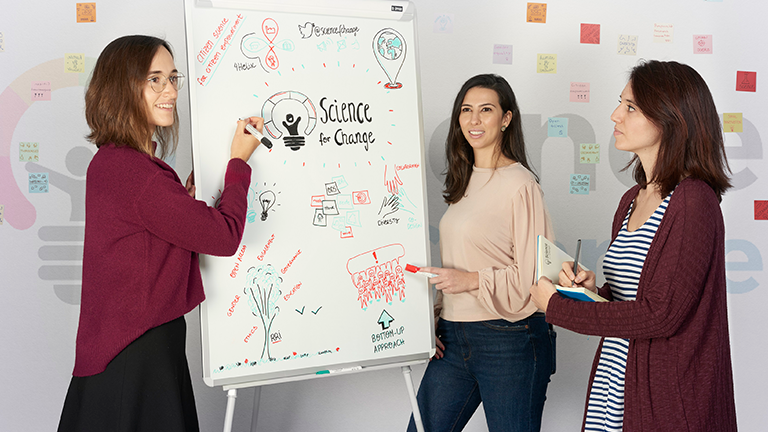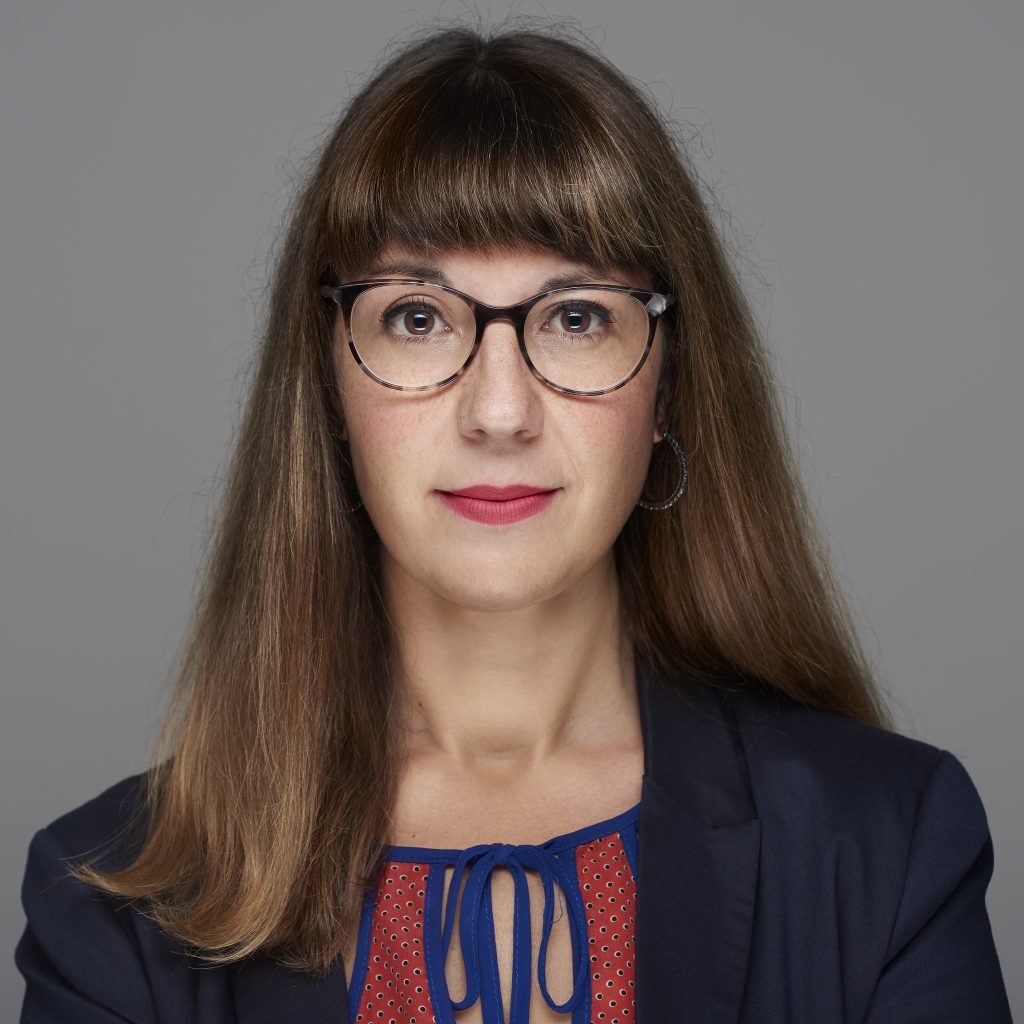
Rosa Arias is a Chemical Engineer by the University of Barcelona and MSc in Energy with distinction by Heriot-Watt University (Edinburgh); she is the creator of OdourCollect and the founder and CEO of Science for Change, a company born in 2019 to exploit the results of the European Project D-NOSES,which is monitoring odour pollution through an inclusive citizen science methodology. One of the things that make a difference in her company is that it uses a co-design methodology in citizen science projects. In addition to coordinating D-NOSES, she is part of the Cos4Cloud team; specifically, she co-leads the services’ co-design work. Besides, Rosa coordinates NEWSERA and the “Catalan hub” of another H2020 project, TRANSFORM. Recently, she has also been elected to be part of the new ECSA’s board of directors. When asking her how she discovered citizen science, she answers that it’s a long story. Still, to keep it short, the first time that she heard about this term was thanks to a tweet of Dr Barbara Kieslinger, a citizen science expert and senior scientist at the Austrian Centre for Social Innovation, who was working on SOCIENTIZE, a project coordinated by Fundación Ibercivis.
Rosa, you have very multidisciplinary expertise; how did you end up moving from chemical engineering to work in citizen science projects?
Again a long story… After getting my degree, I moved out to Edinburgh to study for a master. Although I was offered to do my PhD there and I love Scotland, I am not a big fan of rainy cities! So I came back to Barcelona, and started working at the University as associate professor. Some months later, I found a funny job offer to create the first odour laboratory in Spain through a small PYME, and I did. Five years later, I wanted to keep learning and I missed research, so I started working on European projects.
I first realised that people could help monitor the environment when I coordinated a project on climate change at the Catalan Institute for Climate Sciences (IC3). I thought that it could be wonderful if people visiting natural parks would use sensors to monitor and measure phenology or observe species?
Then, I came up with the idea of creating a citizen science App to monitor odour pollution, my field of expertise. So I started a collaboration with Fundación Ibercivis to make true OdourCollect. After receiving funding for creating the first version of the App through the MyGeoss project from the Joint Research Centre (JRC), I wrote D-NOSES and submitted the project idea to the SwafS call, which aims to map, measure, and tackle odour pollution through citizen science using the OdourCollect app.
In the last Cos4Cloud meeting, your team prepared a co-design activity through Miro. It was a great experience. When did you start using the co-design methodology?
I think once you discover the co-design power, you can’t stop using it in every meeting and project! In our case, we began to use the co-design methodology spontaneously in the D-NOSES project framework because odour pollution involves several stakeholders from the quadruple helix: the private sector, usually the emitters of odours; the public sector is also crucial to legislate and protect the affected neighbours the academia to validate the data; the citizens that are the ones who are suffering the bad smells and are crucial to gather real time odour observations.

That is how we realized that we need to work together with all of them; you have a different perspective when you’re a researcher, a public manager, an industrial worker, or part of the affected community.
Since then, we have been applying co-design with all of them at many levels: from co-efining the app to data collecting, visualization, and interpretation, to the very definition of the research question in the D-NOSES pilots.
Why do you think it is positive for citizen science projects to use the co-design methodology?
Even if it is not essential to use design thinking in citizen science projects, it is much more enriching. It is a paradigm change; you switch the approach from the ‘top-down’ to the ‘bottom-up,‘ involving participants in a more active way. You can co-design the research question and the project’s objectives, or even a proposal to carry it out and process the data. One of the essential things in which co-design is also very helpful is to interpret the data. On the other hand, I believe co-design is vital when you want to get a high level of participation and involvement in your project; and tackle any socio-environmental challenge that affects people. Besides, being part of the co-design process is an excellent way to understand the real problem. For example, the case of odours is a very complex issue. However, after explaining to the neighbours this type of odour pollution being perceived during the co-design sessions, they felt safer, became more patient, and understood why it is essential to measure and objectivise the situation and why it is not easy to solve it.
One example of something that came up in a co-design session with the neighbours and that you haven’t thought about before…
One of the things that surprised us is that participants asked to include in the OdourCollect App also pleasant smells; we had not thought about it until then!
In the Cos4Cloud project Science for change leads the co-design methodology, but could you explain how?
In the Cos4Cloud project, we are co-designing the services from a bottom-up and a user-centred approach. But what does it mean? We want the services to be useful and appealing for the final users. That is why we are designing participatory sessions together the needs, opinions, and requirements directly from the final users, who have different profiles. But I’m not doing this alone, at Science for Change we have a transdisciplinary team of engineers, sociologists, anthropologists and journalists who allow us to apply our methodologies in a transversal way. In Cos4Cloud, Blanca Guasch and Alex Amo are the ones who are leading the co-design activities.

From your perspective, which is the role of the Cos4Cloud project in the citizen science context?
When working in a citizen science project, you realise how transversal and interdisciplinary they are — you need IT experts to build the app, a GDPR expert to manage the data, a communicator to engage citizens, academics to validate the information, funders, etc. But you are not an expert in every field, and maybe don’t have a big budget. I am happy to be part of the Cos4Cloud project because it will help citizen observatories tackle some of these common challenges— one of the most important, the IT tools that the project is developing. Additionally, Cos4Cloud is promoting collaborations across citizen observatories platforms and countries; which is fantastic.
Regarding OdourCollect, it is also one of the citizen observatories that participate in the project. Which is its role?
OdourCollect will test and integrate some of the Cos4Cloud services. We can’t wait to incorporate them! For example, we’re struggling with data visualisation and GDPR. It will be great when we add these Cos4Cloud services to help us improve and save us a lot of time. The project can also connect us with other citizen observatories; maybe we could share communities of citizen science experts in the future or even data.
Cos4Cloud is part of the European Open Science Cloud (EOSC); do you think this is relevant?
Yes, I believe it is crucial to align our project with the EOSC, which encompasses all the open data generated in Europe. One of the direct benefits of being part of this cloud is that the citizen science data, services, and tools will be together with other data, which is now entirely accepted by the scientific community. This way, citizen science data can gain robustness and trust in the eyes of the academic and political fields.
When you think about citizen science in the future, what comes to your mind?
For me, citizen science has just begun. It generates new knowledge, helps solving social and environmental challenges with everyone’s collaboration, and can voice society’s concerns. It also allows aligning science and society’s interests by facilitating dialogues between different actors, such as citizens, the public sector, industry, or academia, among many other benefits. In fact, I think we will move from globalisation to localisation, meaning that we will work on the environmental challenges at a regional, local, and even community level.

In this context, citizen science has vast potential. Why? Because the countries are diverse and the different cities and communities, too. It will be easier to contribute to the Sustainable Development Goals (SDGs)’ monitoring and accomplishment at a local level. Without any doubt, citizen science will play an essential role in doing it.
Be part of our community and discover the co-design with us!
In the Cos4Cloud project, we want to create a community to contribute to the co-design activities. You can join us to directly help us to improve citizen science technology while enjoying it. We are looking for people belonging to civil society, citizen observatories’ communities, NGOs, industries and SMEs, local governments and public institutions, and academia. Experts by training, experts by experience, amateurs, and everyone, are welcomed to participate! CLICK HERE TO JOIN.

















